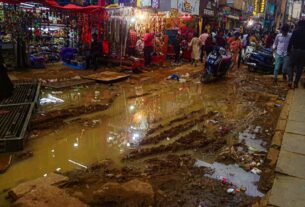Bangalore also among the slowest cities after Kolkata.
Bengaluru, Nov. 18, 2018: The report titled ‘Mobility and Congestion in Urban India 2018’ published by NBER (National Bureau of Economic Research) was released in the start of November 2018.
The report says, “We develop a methodology to estimate robust city level vehicular mobility indices, and apply it to 154 Indian cities using 22 million counterfactual trips measured by a web mapping service. There is wide variation in mobility across cities. An exact decomposition shows this variation is driven more by differences in uncongested mobility than congestion. Under plausible assumptions, one standard deviation improvement in uncongested speed creates much more mobility than optimal congestion pricing. Denser and more populated cities are slower, only in part because of congestion. Urban economic development is correlated with better (uncongested and overall) mobility despite worse congestion.”
At the same time, the report also states some cities that are fast and the least congested in the Mobility Index. Cities like Srinagar (rank 2nd) and Chandigarh (rank 7th) are one of them.
Anjali Phutela, a Chandigarh local living in Sector 35, said, “Chandigarh has no traffic congestion since the roads are wider and regulation is more proper in comparison to Bangalore. The police are always alert and almost always catch the people who break traffic rules. The CCTVs are on every traffic signal and record every titbit of information. And if anyone breaks the signal, a challan is directly sent to their homes.”
G. Kuruvila, an urban planner in Bangalore, said, “Bangalore ranking as the most congested city in the report is not a surprise. Traffic jams and violations are a common thing. What we could do is make our public transport stronger so that people reduce commuting in cars.”
According to a paper published by Smarter Cambridge Transport, reducing traffic congestion and pollution in urban areas through low-capital-investment-requiring initiatives like Optimise traffic-light management, use CCTV to monitor road conditions, Enforce existing road traffic laws, improve perceptions of buses, extend residents’ parking zones, charge for workplace parking, improve cycling infrastructure, improve bus services, develop and refine park-and-ride, rationalise distribution and deliveries. Some high-investment-requiring initiatives like existing rail network, light rail, Strategic Road Network resilience, road pricing, etc. can also be some methods that could be put to use.
Picture Credits: NBER



